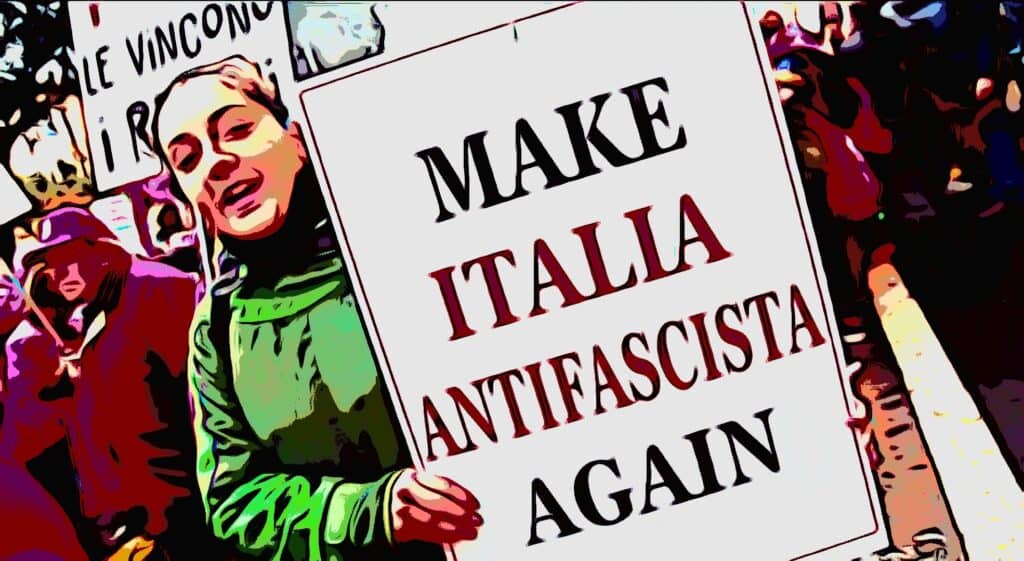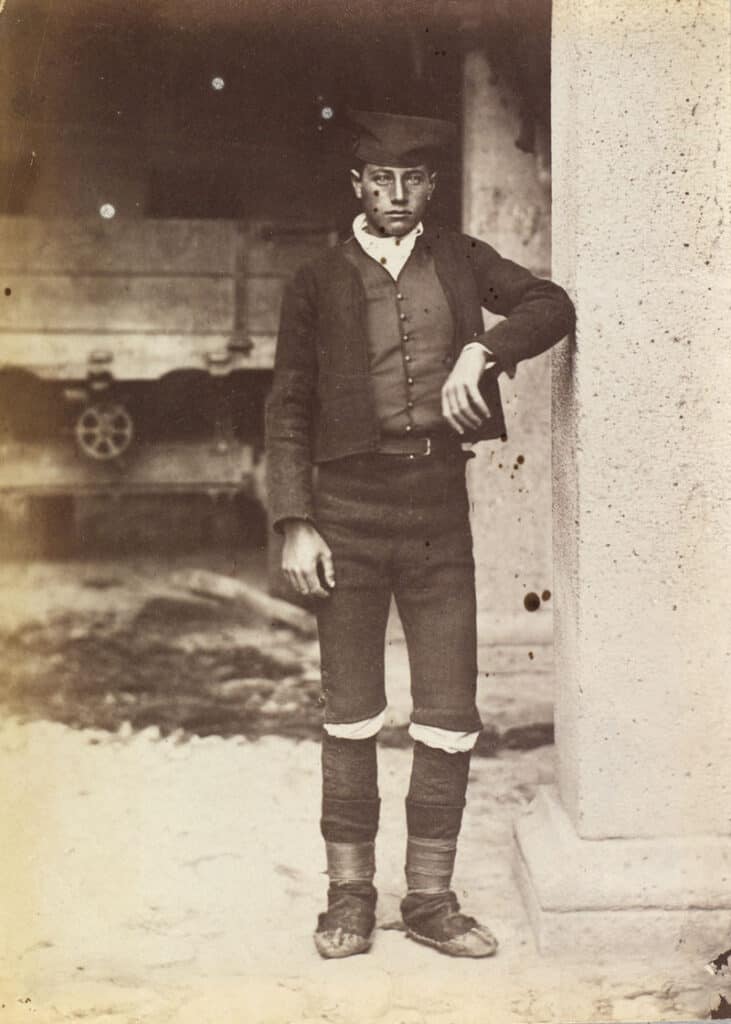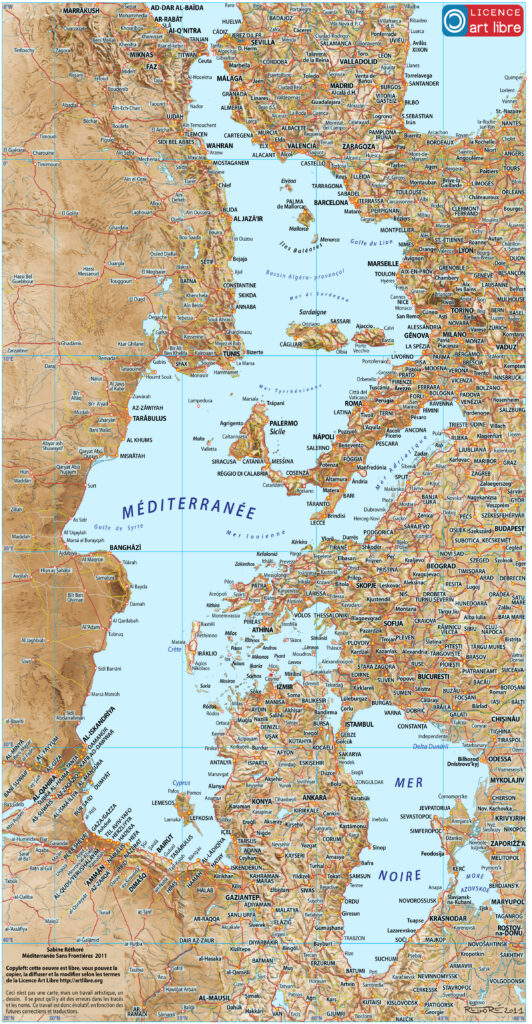
By Victoria “V.K.Y” Kabeya

I am proud of my Sicilian heritage. This statement sounds normal for the common American, but it would surprise you if you saw my face; I am not white but Afro descendant and mixed- race.
Therefore, expressing my pride in such heritage, as a brown skin person, I am aware that my words may seem improbable or surprising to American citizens. The United States is the land where human beings are made diverse, yet remain divided by race, caste, or heritage.
I’m European, where racism exists, but where the fluidity of a human being is tolerated, more or less accepted. My mixed race is not rooted in joy. I’m descended from people who experienced colonial violence. My ancestors were African, but also from India, China, Sicily, Sardinia, and Calabria. I’m not descended from kings and queens, but from slaves, little people, poor Sicilian peasants pennilessly exploited.
Their poverty is my wealth, my pride.
A pride that I carry high, without worrying about the dividing line that might pit us against each other. I’m made of Black and white, and in the ancient history of our Mediterranean basin, our ancestors, both white and Black, were aware of human value. There, the Black man could be the continuity of the white man and vice versa.
If I can’t choose between each group from which I’m descended, I’ve found in the colonial exploitation of my Sicilian, Sardinian, and Calabrian ancestors, a mirror of what my African ancestors may also have suffered; the dehumanization of the African began with white peoples considered inferior by white colonial institutions. My condition was no longer a white-on-black problem, but rather the fact of human evil against others.
We are Mediterranean, yet we are called “inferior,” or “European Negroes,” words that highlight the contempt these Western institutions have for us. And yet, it is our civilization, our Mediterranean heritage, that of the Greeks and the Shardanas of Sardinia, that is being exploited to build the myth of a great West. Let’s not forget that Black African lineages — whether Canaanite, Egyptian, or Kushite — were recognised by the Greeks as one of the three foundations of Europe.
What I am going through is not easy, though, because being mixed up means facing up to my own contradictions. The same Mediterranean Sea that I claim is the same one that swallows the corpses of African migrants. Those will never make it to Lampedusa.
These same Mediterraneans were the same ones who attacked Africans to feel closer to a Western power deemed pure because profoundly white.
I remember the Neapolitan skulls, the improbable praise of Cesare Lombroso, the massacres, the Briganti, the waves of migration and the “Forbidden to Dogs and Italians” billboards in Belgium.
I also face my own contradiction when seeing cases such as Yusuf Hawkins’, some Italians crushing Blacks to feel closer to white supremacy.
These obstacles sadden me but I am still proud because I know I am the product of a much more ancient lineage before 1492 crushed our vision of the world.
If the world was divided into fraudulent spheres of “blackness,” deemed inferior, and “whiteness,” referred to as superior, the process of decolonization shall be applied to both white and Black Europeans, especially in the Mediterranean world. As ancient history highlighted it, both Black Africans and Europeans, whether Egyptians, Romans, Greeks, or Kushites — though they had their specific political vision — were largely unconcerned with the issues related to race and skin color. If the ancient Romans were white, they also had a Black and mixed-race minority. The latter were not slaves, and certainly not treated in an inferior way.
Their skin color did not make them any less Romans, since Roman identity was based upon shared values, beliefs, and customs. This particular trait of identification was proper to all the ancient powers, whether they had a culture of race mixing or not.
The concepts of blackness tied to inferiority and whiteness to elevation saw the light in 1492 in the Western sphere, following the Moorish downfall. These ideas and the obsession for Christianity and white purity were spread by the Spanish Catholic royal family. However, the latter had been influenced in their thoughts by the Arab and Arabized thinkers and philosophers from the early medieval era. The Al Muqadima book published in the 14th century by Ibn Khaldun was influential in both the Atlantic and later the Ottoman world as the philosophy promoted by Khaldun contributed to the dehumanization of the Black Africans. Indeed, it is thanks to slavery that the Arabs managed to build their wealth and structures — as illustrated by the port of Basra, in Iraq.
The promotion of Christianity, which was opposed to Islam in the 15th century, was supported by the idea of racial purity. But it was not until the 18th century that these ideas of racial purity and elevation became the foundations of the Western world. Consequently, as the colonization of the Americas led to the modern day political domination of the West, the slave trade contributed to the financial prosperity of European leaders. But it was through pseudo science and racist ideologies of superiority and inferiority that the Western power managed to hold history hostage, rewriting it through a despicable Eurocentric lens.
If Black Western activists wish to speak against the legacy of the slave trade, the work of decolonization is often thought about for the Black groups only. In reality, the process of dehumanization, which was promoted against the Black Africans by the West, was first applied towards white populations deemed inferior by the higher Western powers. The Romans held white populations in a status of inferiority they called Barbarians. They bullied, persecuted, and tortured them at times. In other eras, the Brits tortured the Irish and the Scots, and while the French dominated and crushed the Corsicans, while the northern Italians invaded and used scientific racism to destroy the Meridionali. The dehumanization of the Mediterraneans was one of the first steps before the racial deconstruction of the Africans in the 19th century.
Cesare Lombroso, a Jewish-Italian doctor who is now considered the father of Italian criminology, promoted vicious and racist ideas towards the southern Italians. The latter were considered born criminals, and their high rate of savagery was justified by their Black and Asian blood and thus, racial impurity. The Western European, especially in politics, are inherently violent and are incapable of building their society and structures outside of violence.
Both the southern Europeans and the Mediterraneans were exploited by the Northern European powers to assert their domination. First, the Southern Europeans were ones of the first to be psychologically attacked with false ideas of inferiority. They were also mocked,
ridiculed, and called the bottom due to their racial admixture and heritage. Indeed, if the Mediterraneans or southern Europeans are white, many of them still descend from Black branches, but also from Afro-Asiatic ones (Afro-Asiatics/Semites). The Jews, Sicilians, Calabrese, Greeks, and many other nations are made of Black, mixed-race, and white groups.
In the ancient world, white Mediterraneans could settle in Black African lands. When they did so, they embraced the culture they assimilated into. In the same way, Kushites/Aethiopians, and Black Berbers could assimilate into white spaces. The ancient Greek mythology, through the story of the goddess Europa after whom the continent was named, was the daughter of Agenor, of Canaanite and Egyptian descent. By this image, the Greeks knew that their culture was also co-created, or at least made by Black African branches. The medieval Jewish liturgy also spoke about the presence of pygmies in the Mediterranean Greek islands. Therefore, since the beginning, the Mediterranean space was never white, but rather multiracial blending white, mixed-race, and Black groups.
If ancient Mediterraneans were exploited, the statues promoted by the Northern European powers never look like the modern day populations. Actually, the faces that are allowed to be shown are those of men and women who fit the Northern European look and phenotype. However, plenty of other statues and artifacts remain hidden in museums as they highlight the reality of the ancient Mediterranean world. In these artifacts, one sees white Greeks wearing African hairstyles. These white Greeks are either white Hellens who assimilated Black customs, or multiracial white Greeks who remained attached to African culture. Then, the Black Aethiopian sculptures are presented as representation of foreigners who visited the Greek space. In reality, these Aethiopians were no longer Kushites in culture, but Black Greeks who were a part of this society. The same way, the Romans displayed artifacts of mixed people wearing traditional African hairstyles, while dressed in Roman clothes.
How come the ancient Greek statues displayed everywhere do not look like the modern day southern Europeans, then? The answer is simple. The propaganda of the Great West had to be based upon the fraudulent principle of “pure whiteness.” There are many other statues from the Classics and even before that time which debunk the racist whitewashing of the Mediterranean. Greek mythology recognises Black Africans are one of the three founders of the space, which means that the southern Europeans and Mediterraneans are white, but also descendants of Black branches over time. Modern science proved that many Sicilians, even Ashkenazi Jews, have a certain amount of Black blood which dates back from that era and the centuries which came after.
The ancient Europeans were much more progressive, intelligent, and even clairvoyant regarding race than their modern descendants whose thoughts are nurtured by the damaged image of the Black Africans.
The Northern European powers which dehumanized the southern Europeans had no issue stealing the history of the ancient Greeks — and thus the Mediterranean as a whole — to build the propaganda of the Great West. The Classics, considered as the epitome of European grandeur and superiority, have been as whitewashed and taken advantage of as the Roman era. The racist modern far-right groups, influenced by racist ideologies which date back to the 18th century, hold onto the Greco-Roman era to feel a certain white pride. The Western political leaders consider the Classics to be the foundation of their political, social, and cultural elevation. Therefore, the Western powers managed to establish a separation between the modern southern Europeans seen as lazy and backwards, and the northerners who are synonymous with elevation. The latter simply stole and appropriated a space, and a history which was never truly theirs since it belonged to populations deemed inferior.
Two issues represent a problem. First of all, the European identity is always synonymous with whiteness and Western identity. In reality, ancient history proves us that Europe was a
crossroads where Black, mixed-race, and white people interacted for centuries. The 1492 Moorish downfall supported the idea that Black people are an anomaly in Europe, when the ancient ancestors confirmed that they were always there. Even today, European identity is tied to the West and Christianity. Actually, it is plural since Europeans can be Christians, Jews, or even Muslims. Indeed, if the Caucasus mountains are perceived as one of the most important places regarding the pure Caucasoid heritage, the people of Chechnya are Caucasoids but also Muslims.
The Classics have been used by the Northern European powers to further justify the root of their superpower. The Western European domination was shaped by and through brutality, barbarity, and violence, not by the philosophical treatises or the other Classics. The Classical era is used to justify both whitewashing and Eurocentrism. It was with the Greek identity that this whitewashing took form. No ancient writer from the Classical era ever stated that Greek identity is synonymous with whiteness in terms of race. The Hellens were the people who defined Greek-ness. Before their arrival, the Greek islands and space were populated by proto-Greek groups, many of which descended from Black Egyptians, Black North Africans, and Canaanites (another Black group).
The only trait which defined one’s Greek identity was the language spoken. He who spoke Greek was Greek. Consequently, the Greeks were made of various races and lineages, as waves of immigrants blended with Black groups too. It is thus more than probable that the Black Aethiopians in sculptures or paintings dating back from the Classics were not visitors, but Black Greeks, and their presence in art reveals the multiracial and multicultural heritage of Greek culture. Yet, the 1492 Moorish downfall caused a form of amnesia even within the white groups living in the Mediterranean. The latter, including the most despised, perceived the Black Africans as inferior in everything due to the trauma left by the slave trade.
The dehumanization of the southern Europeans carried on through the prisms of immigration. In the early 20th century, theories linked to racial purity, which were tied to the context of European immigration to the United States and South America, encouraged the American institutions to classify the white Europeans even more. If the Northern European immigrants, except for the Irish, were considered white and pure, the southern ones were treated like Mulattoes and called the “N—— of Europe”. This racist qualification was a reference to both their lower economic status (a poverty caused by northern colonialism and exploitation of southern European finances) and to the ancient and medieval racial background of the Mediterraneans. The latter could fit in the idea of progress and avant-garde for being the most primitive individuals to have walked the earth.
Therefore, the Italian immigrants in the United States, especially the southern ones, were not perceived as white at all. The rage this sparked led to further racist actions; in order to prove their elevation and whiteness, Italian Americans could attack, crush, and even murder Black Americans to assert their domination and closeness to whiteness. If some Sicilians were lynched in the South of the U.S. for being who they were, the case of Yusuf Hawkins, a young Black American teenager murdered in 1989 by an angry crowd of Italians, illustrates this reality. Even today in southern Europe, some southern Europeans can express their hatred and disdain towards the Black immigrants they crush so as to feel superior and better.
Until this day, the Northern Europeans still want to make a clear distinction between them and the southerners. Southern European presidents can prove to be even more racist towards the Black Africans in order to attach their sphere to the idea of progress and elevation supposedly represented by the North. But they also need these same Mediterraneans to exploit in order to maintain a political propaganda as displayed by the fraudulent myth of the Great West.
Mediterranean history is still tied to the horror of Eurocentrism, as the historians and authors
still want to attach, understand, and evaluate the extent of this region through a corrupt Northern European approach which makes no sense. In other words, the south needs to remain white. In this dynamic, no effort was ever made by the Northern European historians to put an end to the dehumanization of the Mediterraneans, whether Black African or not, who built the Mediterranean heritage since the Bronze Age.
This propaganda not only manipulates the modern white population into believing that Black people were never a part of their sphere, but it also blocks the Blacks within a sphere of inferiority as they wrongly think that they never built anything in history. Worse, that no one ever interacted with them over time.
The modern Black immigrants even think that European history is not theirs, when Black Africans are one of the three foundations of the Mediterranean Basin.
If any import matters, Mediterraneans should be the ones to help decolonize their space and rewrite it through their heritage only.
By Victoria “V.K.Y” Kabeya, All Rights Reserved, 2023
Sources
Gorsky, Jeffrey “How Racism Was First Officially Codified in 15th-Century Spain”, Atlas Obscura, 2016 https://www.atlasobscura.com/articles/how-racism-was-first-officially- codified-in-15thcentury-spain
Mariscal, George. “The Role of Spain in Contemporary Race Theory.” Arizona Journal of Hispanic Cultural Studies 2 (1998): 7–22. http://www.jstor.org/stable/20641414.
Bond, Sarah, “Whitewashing ancient Statues:Whiteness, Racism and Color in the ancient World”, Forbes, 2017 https://www.forbes.com/sites/drsarahbond/2017/04/27/whitewashing-ancient- statues-whiteness-racism-and-color-in-the-ancient-world/?sh=4b6aed8475ad
Talbot, Margareth “The Myth of Whiteness in Classical Sculpture” The New Yorker, 2018 https://www.newyorker.com/magazine/2018/10/29/the-myth-of-whiteness-in- classical-sculpture
Ikhumen, Imara “Whitewashing Antiquity”, Confluence, 2019 https://confluence.gallatin.nyu.edu/context/interdisciplinary-seminar/whitewashing- antiquity
“The White Lie: Questioning the Legacy of ‘Whitewashing’ Ancient Sculpture” Uncomfortable Oxford, 2019 https://www.uncomfortableoxford.co.uk/post/the-white-lie- questioning-the-legacy-of-whitewashing-ancient-sculpture
McCoskey, Eileen Denise, “Beware of Greeks Bearing Gifts: How Neo-Nazis and Ancient Greeks Met in Charlottesville”, Origins, May 2018 https://origins.osu.edu/article/beware- greeks-bearing-gifts-how-neo-nazis-and-ancient-greeks-met-charlottesville? language_content_entity=en
Poser, Rachel, “He Wants to Save Classics From Whiteness. Can the Field Survive?”, The New York Times, 2021 https://www.nytimes.com/2021/02/02/magazine/classics-greece- rome-whiteness.html
Bernal, Martin “Black Athena: The Afroasiatic Roots of Classical Civilization, Vol 1: The Fabrication of Ancient Greece 1785-1985 (New Brunswick, 1987).
Snowden, Frank ” Blacks in Antiquity” (Harvard University Press, 1971).
Cook, Greg, “Whitewash”, The Phoenix, 2007 https://thephoenix.com/article_ektid52391.aspx
Ortiz, Roxanne, “Columbus Day Helped Italians Become ‘White’, Roxanne Dunbar-Ortiz Explains” Teen Vogue, 2021 https://www.teenvogue.com/story/columbus-day-italians-white
Starkey Simeo, Brandon “White immigrants weren’t always considered white — and acceptable”, ANDSCAPE, 2017 https://andscape.com/features/white-immigrants-werent- always-considered-white-and-acceptable/
Vecoli, Rudolph. “‘Are Italian Americans Just White Folks?’” Italian Americana 13, no. 2 (1995): 149–61. http://www.jstor.org/stable/29776299.
Chirico, Francesca ““I meridionali? Sono biologicamente inferiori”, i danni di Lombroso” Linkiesta, 2012 https://www.linkiesta.it/2012/11/i-meridionali-sono-biologicamente- inferiori-i-danni-di-lombroso/
“A Torino gli studi di Cesare Lombroso, il medico che classificava i napoletani come delinquenti”, Fanpage.it, 2019 https://napoli.fanpage.it/a-torino-gli-studi-di-cesare- lombroso-il-medico-che-classificava-i-napoletani-come-delinquenti/
Abete, Letizia, “I neoborbonici contro Lombroso: “È giusto che i bambini vedano la mostra?”, Vesuviolive.it, 2019 https://www.vesuviolive.it/ultime-notizie/308226- neoborbonici-lombroso-mostra/
Cuttrera, Sabato “DELINQUENTI SI NASCE? CESARE LOMBROSO, GENETICA E DNA”, ABE Napoli, 2021 https://abenapoli.it/2021/08/30/delinquenti-si-nasce-cesare-lombroso-genetica-e-dna/

Victoria “V.K.Y” Kabeya is a Belgian-French historian, author and researcher of African, Asian, Arab and Mediterranean descent. She was born in 1991. Her work centers around the study of black populations in the Middle East along with the ancient Mediterranean world in the context of racial exchanges between white and black southern Europeans. She began publishing in 2015 and has released more than eleven history books in French and English.
Publisher’s note: Upon my first reading of Victoria “V.K.Y” Kabeya’s “Mediterranean We Are,” I knew I would want to pair Ms. Kabeya’s incisive and poignant text with the extraordinary work of cartographer and artist Sabine Réthoré, whose map of the Mediterranean and the land that surrounds it is a revelation. Rotating the view, removing the political boundaries, and retaining the natural contours of the earth and the towns and cities humanity has lived in for millennia simultaneously reimagines the geography and deepens the roots of the world as we experience it. I encourage everyone reading this piece to visit Mediterranean Without Borders and get to know Sabine Réthoré.
